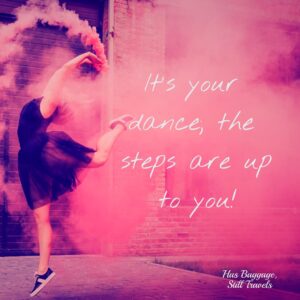What’s your creative jam? Do you like to paint, draw, dance, write or sing? Are you a sculptor, inventor, baker, or designer? Or would you rather garden, embroider, work with wood, cook or knit instead?
Most people have at least one thing they like to do to creatively express themselves.
In the Forbes article, “Here’s How Creativity Actually Improves Your Health,” contributor Ashley Stahl outlines the ways that creativity boosts mental and physical health and brain function.
An important piece of this is the creative flow state. If you’re not familiar with that particular phrase, I’m sure you’re familiar with the actual experience.
A flow state usually happens when you are entirely present and completely immersed in the moment of what you are doing, often resulting in exemplary outcomes.
Athletes describe this experience as “being in the zone,” but lots of people experience it in daily tasks such as preparing dinner, organizing a closet, etc.
So why does flow, particularly creative flow, even matter regarding mental health?
Interestingly enough, flow states put us in a position to reap the rewards of some pretty neat neurobiological processes, such as a shift from the typical waking beta brainwave state to a state somewhere between alpha and theta, commonly experienced during various forms of meditation.
Meditation without even trying? Cool!
There’s also some incredible neurochemistry happening during flow state, according to Steven Kotler in “Flow States and Creativity”:
“Large quantities of norepinephrine, dopamine, endorphins, anandamide, and serotonin flood our system. All are pleasure-inducing, performance-enhancing chemicals with considerable impacts on creativity. Both norepinephrine and dopamine amp up focus, boosting imaginative possibilities by helping us gather more information. They also lower signal-to-noise ratios, increasing pattern recognition or our ability to link ideas together in new ways. Anandamide, meanwhile, increases lateral thinking—meaning it expands the size of the database searched by the pattern recognition system.”
A feel-good chemical brain bath sounds good to me!
Being creative has a ton of positive health effects, including reduced anxiety, depression, and stress. It can help people process their trauma and work through difficult situations – it can even boost your immune system!
Expressive writing specifically was found in randomized trials to boost the immune systems of HIV patients. Daily writing not only increases the CD4+ lymphocytes that are crucial to immune system function, but it also improves pain management for people with chronic pain.
That’s HUGE.
Learning to play an instrument also carries an incredible slew of benefits, such as a lifelong decrease in dementia risk and an increase in executive functioning in the brain.
Even just listening to music has been found to have immune-boosting and stress-relieving effects; music therapy is considered an important addition to traditional therapies for PTSD and trauma, and can help to regulate anxiety, improve pain management, depression symptoms, and even disability.
Dancing improves psychological well-being and decreases fatigue, as well as the many positive physical health benefits like improving muscle tone, balance, and heart health.
As if anybody needed any extra excuse to engage in a spontaneous dance party of one, #AmIRight???

Whatever your favorite way to be creative is, it’s valid and valuable. Create your art and enjoy that brain bath of feel-good chemicals. I know I do!
Check out the links below for more info on creativity and health, and don’t forget to follow Has Baggage, Still Travels on IG and FB for content to cultivate our best selves.
https://www.health.harvard.edu/mental-health/the-healing-power-of-art
